Scaramouche

Brief Synopsis
Cast & Crew
George Sidney
Stewart Granger
Eleanor Parker
Janet Leigh
Mel Ferrer
Henry Wilcoxon
Film Details
Technical Specs

Synopsis
In eighteenth century France, Queen Marie Antoinette asks her devoted cousin Noel, the Marquis de Maynes, to find the true identity of Marcus Rufus, author of a pamphlet extolling "equality--liberty--fraternity." Noel, who is France's greatest, but most ruthless, swordsman, readily agrees. The queen also asks Noel to select a bride, and suggests her protégée, Aline de Gavrillac, whose beauty and spirit charm Noel. Meanwhile, in the forest, Andre Moreau, a handsome ne'er-do-well, goes to see his sweetheart Lenore, an actress with Gaston Binet's troupe. After learning that Lenore has grown tired of waiting and gone to Paris to marry a wealthy man, Andre follows her. Disguised as a coachman, Andre abducts Lenore and her fiancé. After convincing Lenore to marry him, Andre goes to meet his best friend, Philippe de Valmorin. Learning that Philippe is in trouble, Andre drives the coach to the Valmorin house and discovers that Philippe is Marcus Rufus. Soldiers ransacked the house but did not find Philippe, who was hidden by his kindly parents, Georges and Isabelle. Andre, who was reared by the Valmorins, helps Philippe escape by switching coats with him so the soldiers think that Philippe is the coachman. Andre then agrees to get money for Philippe and arranges to meet him in the forest. Andre goes to his lawyer, Fabian, and asks for an advance on his allowance, but Fabian tells him that there are no longer provisions for him. Andre, who was born out of wedlock, demands to know his father's identity and Fabian reveals that the man is the Count de Gavrillac of Normandy. After Andre meets Philippe, the two travel to Normandy, and near the Gavrillac estate, encounter Aline, whose carriage has a broken wheel. Not knowing who she is, Andre is immediately attracted to her, and when the wheel is fixed, he jumps into her carriage and says that he loves her. When he learns her identity, he quickly cools, thus confusing the equally smitten Aline. At the estate, when they find that the count has died, Andre leaves the grieving Aline. Later, at a nearby inn, Philippe is recognized by one of Noel's men, the Chevalier de Chabrillaine, and accused of being Marcus Rufus. Noel, who is also at the inn, seems to defend Philippe, but soon insults his lineage, even though he is from one of France's noblest families. Philippe then strikes Noel with a glove, precipitating a duel. He is no match for Noel and is run through before Andre can free himself from Chabrillaine. Because Andre is not a swordsman, he grabs a pistol and shoots at Noel, but only wounds him. As Andre jumps on his horse and rides away, he promises one day to kill Noel with Philippe's sword. With Chabrillaine's soldiers in pursuit, Andre rides to the Gavrillac estate and sees Aline in the garden. When soldiers approach, she hides Andre and he is able to ride into town, where Binet's troupe is performing. Hiding in the basement of the theater, Andre comes face to face with a drunken actor known as "Scaramouche," who wears a mask because he is disfigured. As the soldiers search for Andre, they happen onto the troupe's performance. Andre, who exchanged clothes with Scaramouche, is pushed onstage, and the soldiers are so delighted with his comic antics with Lenore that Chabrillaine asks to meet Scaramouche. By use of the stage's trap door and a quick change, Andre hides while the real Scaramouche is unmasked. After Chabrillaine and his men leave, Lenore, who recognized Andre after their onstage kiss, angrily threatens to throw him out, because he left her in Paris. When Andre sees the real Scaramouche with the pamphlet, he asks where it came from and is told that it was from Noel's sword master, Doutreval. Andre soon sneaks onto the de Maynes estate and convinces Doutreval to tutor him by saying that he is a friend of Marcus Rufus. In the following weeks, Andre receives lessons from Doutreval by day, while in the evenings he becomes the star of Binet's troupe. Lenore, who thinks that Andre's frequent absences are to see a woman, becomes suspicious when he refuses an offer to go with the troupe to Paris. One day, while getting a lesson from Doutreval, Andre is seen by Noel, who accuses Doutreval of treachery. Andre saves his teacher by saying that he was duped, then Noel draws his sword. He has the advantage over Andre until Aline arrives and momentarily distracts him, thus enabling Andre to escape through a secret passageway. There Andre encounters Doutreval, who tells him that only Perigore, a Parisian master, can further instruct him. Soon the troupe becomes the toast of Paris and Lenore is pursued by several officers, including Chabrillaine. When Andre learns that Noel and Aline are to be married, Lenore thinks that Andre's hatred of Noel is solely because of Aline. When she realizes that Andre plans to kill Noel, who is now Aline's guardian, because of Philippe, she secretly tells Aline. On the morning of the intended ambush, Aline rides out to meet Andre, thus preventing the duel. She tells him that they are in love with each other, but he vehemently denies it. When Andre returns to Lenore's dressing room, he finds Dr. Dubuque, a patriot who has seen him at Perigore's and wants him to take a vacancy in the French Assembly. Andre agrees and, at the next session, joins the Assembly without fear, as all seated members are immune from arrest. For several days, Andre is challenged to duels by Noel's supporters, but each time is victorious. Lenore and Aline have secretly arranged with the sympathetic queen to send Noel away on official business so he is unaware of Andre's presence. On the evening of Noel's return, Aline distracts him from the news by flirting and cajoling him into taking her out. Chabrillaine suggests seeing Binet's troupe, and during the performance, Aline recognizes the masked Lenore and Andre, but says nothing. When Andre sees Noel in the audience and stops to introduce him, Aline pretends to faint and asks to go home, but Andre confronts Noel by removing his mask. The two men then fight furiously throughout the theater, but when Andre has Noel at sword's point, he cannot bring himself to kill Noel and runs away. Later that night, Andre is sulking on the empty stage when he is approached by Georges. Andre feels that he has betrayed Philippe's memory, but Georges reveals that Count de Gavrillac was not his father, but was only covering for the late Count de Maynes. While Georges expounds that instinct prevented Andre from killing his own brother, Andre happily realizes that Aline is not his sister. Lenore, who has overheard everything, says that Aline is the marrying kind, which she is not, and kisses Andre goodbye. Soon Aline and Andre are married and Lenore goes off with a short new suitor, a brooding young corporal.

Director
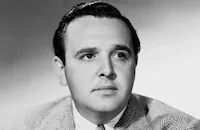
George Sidney
Cast

Stewart Granger

Eleanor Parker

Janet Leigh

Mel Ferrer

Henry Wilcoxon
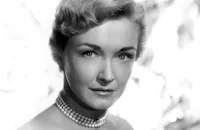
Nina Foch

Richard Anderson

Robert Coote
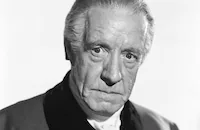
Lewis Stone

Elisabeth Risdon

Howard Freeman
Curtis Cooksey
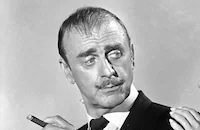
John Dehner

John Litel
Jonathan Cott
Dan Foster
Owen Mcgiveney

Hope Landin
Frank Mitchell
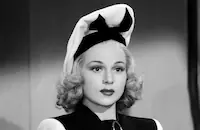
Carol Hughes
Richard Hale
Henry Corden
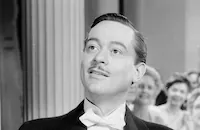
John Eldredge
Mitchell Lewis
Ottola Nesmith
Edna Holland
Val Raset

Dorothy Patrick
Claude Guy
Teddy Infuhr
Cosmo Sardo
John Sheffield
Wilson Benge
Terry Wilson
Joel Friedkin
Barbara Ruick
Patrick Conway
Rex Reason

Douglass Dumbrille
Stephen Chase
William Tannen
Frank Wilcox
George Baxter
Anthony Marsh
John Crawford
John Damler
David Bond
Don Hicks
Larry Craine
Jean Gerard
Aram Katcher
John Newton
Bert Lebaron
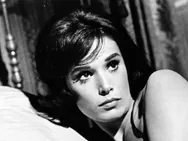
Barrie Chase
Crew
Alan A. Antik
Al Baalas
Peter Ballbusch
Milford Cline
Angna Enters
George Froeschel
Chip Gaither
Cedric Gibbons
A. Arnold Gillespie
James Gooch
Sandy Grace
Arvid Griffen
Sydney Guilaroff
Jean Heremans
Edward Hubbell
Henry Imus
John Indrisano
Henri Jaffa
Conrad Kahn
Mollie Kent
Benny Lane
Tomme Mccoig
Ronald Millar
Dick Neblett
James Newcom
Warren Newcombe
Richard Pefferle
Hans Peters
Val Raset
George Rhein
Irving G. Ries
William Riesbord
Frank Roberts
Charles Rosher
Douglas Shearer
Al Shenberg
Gile Steele
Robert Surtees
Hazel Thompson
William Tuttle
Bert Willis
Edwin B. Willis
Carey Wilson
Edward Woehler
Victor Young

Photo Collections
Videos
Movie Clip
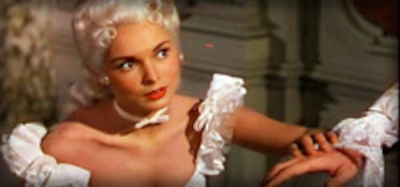


Trailer
Hosted Intro





Film Details
Technical Specs

Articles
Scaramouche (1952)
Ramon Novarro played the title role in the silent 1923 version with Lewis Stone as his archrival. It faithfully followed the novel and made a huge impression on future swashbuckler Stewart Granger who saw it as a child. When Granger was later offered a contract by MGM, one of his stipulations was a guarantee that Scaramouche (1952) would be developed as a project for him and not as a musical for Gene Kelly as originally planned.
Granger got his wish and the resulting film established him as MGM's resident swashbuckler. Originally, Granger was going to play both the hero and his archrival with Elizabeth Taylor in the role of Aline and Ava Gardner as Lenore. That concept was scrapped and Janet Leigh was hired to play Aline (she had to learn to ride sidesaddle for the part) and Eleanor Parker, in her first film as a MGM contract player, got to wear a flaming red wig as the fiery Lenore.
In preparing for his role in Scaramouche, Granger took fencing lessons from Jean Heremans, the European champion, and performed most of the stunts himself. The justly famous eight-minute climactic duel in the theatre between Granger and Mel Ferrer (as Noel, the Marquis de Maynes) required eight weeks of training in which both stars had to memorize eighty-seven individual sword passes and perform twenty-eight stunts. As a result of filming this sequence Granger suffered several injuries like a wrenched knee, a damaged shoulder, and an injured back. There were other mishaps along the way: an iron chandelier that snapped its chain and obliterated a mattress where Granger was supposed to be lying, a fencing sequence where trainer Heremans almost lost an eye, and an incident where Granger's wife, Jean Simmons, was visiting the set and almost received a flying sword in the face.
In spite of the physical challenges that faced the cast and crew of Scaramouche, the completed film succeeds as a grand, witty and colorful entertainment and a definite bright spot in the careers of Stewart Granger, Eleanor Parker, Janet Leigh, Mel Ferrer, cinematographer Charles Rosher, and director George Sidney.
Director: George Sidney
Producer: Carey Wilson
Screenplay: Ronald Millar, George Froeschel, based on the book by Rafael Sabatini
Cinematography: Charles Rosher
Editor: James E. Newcom
Art Direction: Cedric Gibbons, Hans Peters
Music: Victor Young
Cast: Stewart Granger (Andre Moreau), Eleanor Parker (Lenore), Janet Leigh (Aline de Gavrillac de Bourbon), Mel Ferrer (Noel:Marquis de Maynes), Henry Wilcoxon (Chevalier de Chabrillaine).
C-115m. Close captioning.
by Jeff Stafford

Scaramouche (1952)
Scaramouche (1952)
Ramon Novarro played the title role in the silent 1923 version with Lewis Stone as his archrival. It faithfully followed the novel and made a huge impression on future swashbuckler Stewart Granger who saw it as a child. When Granger was later offered a contract by MGM, one of his stipulations was a guarantee that Scaramouche (1952) would be developed as a project for him and not as a musical for Gene Kelly as originally planned.
Granger got his wish and the resulting film - now available on DVD from Warner Home Video - established him as MGM's resident swashbuckler. Originally, Granger was going to play both the hero and his archrival with Elizabeth Taylor in the role of Aline and Ava Gardner as Lenore. That concept was scrapped and Janet Leigh was hired to play Aline (she had to learn to ride sidesaddle for the part) and Eleanor Parker, in her first film as a MGM contract player, got to wear a flaming red wig as the fiery Lenore.
In preparing for his role in Scaramouche, Granger took fencing lessons from Jean Heremans, the European champion, and performed most of the stunts himself. The justly famous eight-minute climactic duel in the theatre between Granger and Mel Ferrer (as Noel, the Marquis de Maynes) required eight weeks of training in which both stars had to memorize eighty-seven individual sword passes and perform twenty-eight stunts. As a result of filming this sequence Granger suffered several injuries like a wrenched knee, a damaged shoulder, and an injured back. There were other mishaps along the way: an iron chandelier that snapped its chain and obliterated a mattress where Granger was supposed to be lying, a fencing sequence where trainer Heremans almost lost an eye, and an incident where Granger's wife, Jean Simmons, was visiting the set and almost received a flying sword in the face.
In spite of the physical challenges that faced the cast and crew of Scaramouche, the completed film succeeds as a grand, witty and colorful entertainment and a definite bright spot in the careers of Stewart Granger, Eleanor Parker, Janet Leigh, Mel Ferrer, cinematographer Charles Rosher, and director George Sidney.
The Warner Home Video DVD of Scaramouche looks spectacular, conveying the same eye-popping Technicolor hues of the original film. The extras include an interview with Mel Ferrer in which he describes the dangerous stunts he and Granger performed in the course of the film, supplemented by production stills. There is also an animated version of the trailer offered in addition to the original theatrical preview and an informative essay, "En Garde! Great Screen Swordfights."
To order Scaramouche, go to TCM Shopping.
by Jeff Stafford
Scaramouche (1952)
Quotes
Trivia
This movie contains the longest uncut fencing duel ever caught on film. Close-ups were filmed afterward and spliced in.
The horseback chase scenes were filmed in Golden Gate Park near the DeYoung Museum and the shot of the female character riding the horse up the steps was filmed in front of the Band Concourse across from the Japanese Tea Garden.
A final scene in which the Marquis de Maynes is killed at the storming of the Bastille was cut in editing, as was another final one with Queen Marie Antoinette.
Originally both Elizabeth Taylor and Ava Gardner were supposed to be in this film, but had to decline due to other commitments.
The filmmakers had trouble with the censors over two issues: the suggestion of possible incest between the principals and the suggestion that Andre and Lenore were having a sexual relationship outside of marriage.
Notes
The opening title card reads: "'He was born with a gift of laughter and a sense that the world was mad.'-Sabatini." According to a September 1938 Hollywood Reporter news item, M-G-M had planned to film a new version of Rafael Sabatini's novel as early as 1939. Pre-production did not actively begin, however, until late December 1950. According to Hollywood Reporter news items in January and February 1951, Ava Gardner and Elizabeth Taylor were both considered for the "female lead" in the film. According to modern sources, Gardner was to portray "Lenore," while Taylor would have been cast as "Aline."
Contemporary news items also reported that Stewart Granger was initially to play a dual role, "Andre" and "Noel," and that M-G-M had planned to shoot the film in Paris. Modern sources indicate that Fernando Lamas and Ricardo Montalban were at one time considered for the two leads. Hollywood Reporter news items include Patricia Hawks, Crane Wilbur, Edith Happy, Joey Nichols and Conrad Martin in the cast, but their appearance in the released film has not been confirmed. In late August 1951, cameraman Robert Surtees took over filming for about two weeks from Charles Rosher when Rosher had to leave to check on hurricane damage to his Jamaica residence.
According to various news items, portions of the film were shot on location in San Francisco's Golden Gate Park and in Monterey, CA. It was also reported that atmospheric backgrounds were shot on the Isle of Man and the Channel Islands off the English coast, but that footage did not appear in the released film. According to items in the Hollywood Reporter column "The Rambling Reporter," the final cost of the film was $3.5 million and the jewels worn by Nina Foch as "Marie Antoinette" were the same as those worn by Norma Shearer in title role of the 1938 M-G-M film Marie Antoinette (see AFI Catalog of Feature Films, 1931-40). At the end of the film, "Lenore" walks off with a man dressed as a young Napoleon Bonaparte, but Napoleon's name is not mentioned. According to a news item, the actor who appeared in the role, Aram Katcher, also appeared as Napoleon in a commercial film produced for Western Sugar Beet Producers. Dancer and choreographer Barrie Chase, who became Astaire's dance partner on several popular television programs, beginning with the multiple-Emmy-winning 1958 special An Evening with Fred Astaire, made her motion picture debut in Scaramouche.
Other filmed versions of the Sabatini novel include a 1923 Metro production directed by Rex Ingram, starring Ramon Novarro, Alice Terry and Lewis Stone. Stone, who appeared as "Georges de Valmorin" in the 1952 film, appeared as "The Marquis de la Tour d'Azyr" in the 1923 version. A Spanish adaptation of Sabatini's novel was made in 1964 under the title The Adventures of Scaramouche, directed by Antonio Isasi Isasmendi and starring Gérard Barray.

Miscellaneous Notes
Released in United States June 1952
Released in United States Summer June 26, 1952
Released in United States June 1952
Released in United States Summer June 26, 1952














